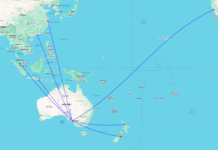Yes, Starlink’s in-flight internet connectivity continues to revolutionize aviation converting unreliable Wi-Fi into a high-performance network akin to home broadband. SpaceX’s low-Earth orbit constellation, surpassing 7,000 satellites, enables download speeds of 100-500Mbps, uploads up to 50Mbps, and latency under 100ms across global routes, outpacing geostationary rivals like Viasat, which offer sub-50Mbps and 600ms+ delays.
Latest Adoptions and Rollouts

Adoption surged in November 2025, with over 20 carriers committing to more than 5,000 aircraft. At the recent Dubai Airshow, Emirates announced free Starlink Wi-Fi across its 232 widebody fleet (Boeing 777s and Airbus A380s), starting installations this month. The first commercial flight launches November 23 on a 777-300ER, with 14 planes retrofitted monthly; A380s follow in February 2026 using three antennas for multi-cabin capacity, completing by mid-2027. Emirates President Tim Clark called it a “defining moment” for seamless streaming, gaming, and remote work on personal devices and seatbacks.
Singapore Airlines confirmed LEO satellite adoption—widely interpreted as Starlink—to boost Wi-Fi from 5-10Mbps to 100-150Mbps, free for all passengers without logins. Factory integration hits Boeing 777-9s in 2027; retrofits begin on long-haul A350s during maintenance.
Virgin Atlantic, the first UK carrier, selected Starlink for its Boeing 787s, A350s, and A330neos from Q3 2026, delivering free, high-speed connectivity fleet-wide, backed by $745M financing for cabin upgrades.

Qatar Airways hit a milestone with over 100 widebodies (50% of fleet) equipped, ahead of schedule since October 2024, operating 200 daily connected flights for gate-to-gate access. Expansion accelerates to cover remaining aircraft.
Other notables: United targets full regional fleet by year-end and 800+ mainline by 2027; British Airways (IAG) rolls out free service on 500+ planes from 2026; Air France integrates on 250+ long-haul jets; Hawaiian covers 60+ transpacific routes. Laggards like Delta cling to Viasat contracts. Elon Musk forecasts 10,000+ Starlink-equipped planes by 2034, dominating the $2B market.
Why It’s a Game Changer
LEO satellites at 340-550km enable low-latency signals via compact 80kg antennas, installed in 1-2 hours without downtime. This unlocks 4K streaming, video calls, and real-time apps impossible on legacy systems. Airlines gain loyalty via free access (80% of adopters) and revenue from upsells, with 70% of bookings influenced by Wi-Fi quality.
| Aspect | Legacy Wi-Fi (Viasat/Intelsat) | Starlink Aviation (2025) |
|---|---|---|
| Download Speed | 10-50Mbps | 100-500Mbps |
| Upload Speed | 2-10Mbps | 20-50Mbps |
| Latency | 600-800ms | 20-99ms |
| Coverage | Spotty oceans/poles | Global, gate-to-gate |
| Passenger Cost | $5-30/flight, tiered | Free (all cabins) |
| Install Time | Weeks | 1-2 hours |
Starlink’s Broader Impact on Travel
Beyond the cabin, Starlink is reshaping the entire travel ecosystem by bridging connectivity gaps. For digital nomads and remote workers, it turns 14-hour flights into mobile offices, allowing seamless file syncing, virtual meetings, and itinerary tweaks mid-air—boosting productivity on routes like Sydney to London.




